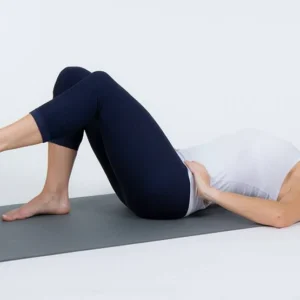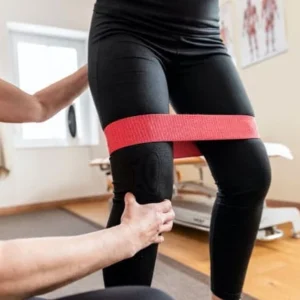Managing Joint Pain While Staying Fit
We all know that fitness is important, but when it comes to joint health, we often forget just how much the two are connected. I’ve been there myself—feeling stiff after a long workout or even experiencing joint pain after sitting for too long. But over the years, I’ve come to realize that the right kind of fitness routine doesn’t just strengthen muscles; it plays a huge role in keeping our joints healthy too.
I remember struggling with joint discomfort in my knees and lower back, especially after long days of working at a desk. It was frustrating—how could I stay active and fit if my joints kept holding me back? But what I learned over time is that fitness is not the enemy of joint health; it’s the key to improving it.
If you’re struggling with joint discomfort or just want to improve your joint health as you age, fitness can be a game-changer. In this post, I’m going to walk you through seven powerful ways fitness can support joint health, helping you unlock your body’s full potential. Let’s dive into how regular exercise can make all the difference.
1. Strengthening Muscles for Joint Protection
When we think of fitness, we often focus on building muscle, endurance, or flexibility. But did you know that building stronger muscles can actually protect your joints? It’s true. Strong muscles act as a cushion, absorbing some of the stress that would otherwise go straight to your joints. This is especially helpful for high-impact activities like running or jumping.
In my experience, when I began incorporating weightlifting and resistance exercises into my routine, I started noticing fewer flare-ups in my knees. My quads and hamstrings were stronger, and they were doing a much better job of absorbing the shock, rather than allowing it to transfer straight to my knee joints. It was like I had a built-in support system protecting my joints.
The connection between fitness and joint health becomes evident when you focus on strengthening the muscles surrounding your joints. Whether it’s your knees, hips, shoulders, or back, muscle strength provides an extra layer of protection, reducing the impact of everyday activities.
For example, lunges, squats, and deadlifts can all help strengthen the muscles around your knees and hips, making them more resilient and less prone to injury. It’s not just about the size of your muscles—it’s about how they work together to support your joints.
2. Improved Flexibility and Range of Motion
Flexibility isn’t just about touching your toes—it’s essential for joint health. Regular stretching and flexibility exercises can increase your joint’s range of motion and reduce stiffness. It’s a simple, yet incredibly effective way to keep your joints moving smoothly.
When I first started adding yoga and stretching into my routine, I was amazed by how much more fluid my body felt. I had always struggled with tightness in my hips and hamstrings, and it caused discomfort in my lower back. But with regular stretching, I noticed an immediate improvement in both flexibility and comfort.
This is where the connection between fitness and joint health truly shines—when your muscles and tendons are flexible, they allow for better movement at the joints. This reduces the risk of strains or overuse injuries and ensures that your joints are constantly lubricated, keeping them moving smoothly.
I’ve also learned that flexibility exercises can help improve balance and posture. Good posture minimizes unnecessary strain on your joints, especially the ones that bear weight, like your knees, hips, and spine. The benefits of improving your flexibility go beyond just mobility—they also play a vital role in maintaining joint health.
3. Reducing Inflammation with Low-Impact Exercise
If you’ve ever experienced joint swelling or inflammation, you know how uncomfortable it can be. Fortunately, low-impact exercises like swimming, cycling, or walking can reduce inflammation without putting too much strain on your joints.
I started swimming a few years ago as a way to take the pressure off my knees. The water’s resistance helped me get a full-body workout while minimizing impact on my joints. Over time, I noticed less swelling, and my joints felt a lot less stiff. Low-impact exercise isn’t just easy on your joints—it’s also incredibly effective for improving overall joint health.
One of the most important aspects of fitness for joint health is avoiding unnecessary wear and tear on your joints. For people with chronic joint issues, high-impact activities can sometimes exacerbate the problem. But incorporating low-impact exercises into your routine allows you to keep moving without the added stress.
Water aerobics is another fantastic option for those with joint issues. It helps improve muscle strength, cardiovascular health, and joint flexibility—all while minimizing the risk of injury.
4. Boosting Blood Flow for Joint Healing
Exercise is a natural way to increase blood flow to all areas of your body, including your joints. Increased circulation means more oxygen and nutrients reach your joint tissues, which can help with healing and reducing discomfort.
Think of it like giving your joints a nourishing boost. I’ve personally experienced this benefit when dealing with a sore shoulder. After a good workout, I’d notice that my range of motion improved, and the soreness would diminish more quickly. So, don’t overlook the healing power of good circulation when it comes to joint health!
Regular movement also encourages your body’s natural healing process. By increasing blood flow, exercise can help carry away metabolic waste products and bring in fresh nutrients to promote joint repair. This is especially important for older adults whose bodies may not recover as quickly from stress or strain.
If you’re dealing with a specific joint issue or recovery, focused movement such as gentle stretching or mobility exercises can help increase blood flow to the area. It’s a simple way to accelerate healing and support long-term joint health.
5. Maintaining Healthy Weight to Protect Your Joints
Excess weight can put extra pressure on your joints, particularly your knees, hips, and lower back. But through regular exercise, you can manage your weight more effectively, taking strain off those key areas.
A few years ago, I started focusing on cardio and strength training to shed some extra pounds. The change wasn’t just about fitting into my clothes better—it had a massive impact on how my joints felt. I could move without that constant pressure, and my knees no longer hurt after a long day of standing.
Maintaining a healthy weight reduces the load on your joints, preventing conditions like osteoarthritis or joint degeneration. It’s about finding the balance between enjoying life and giving your joints the care they need. Fitness doesn’t have to be extreme, but it should be consistent. Regular physical activity, paired with a balanced diet, is the foundation for joint health.
6. Fostering Joint Lubrication with Movement
Ever felt like your joints were stiff and creaky, especially after sitting for long periods? Regular movement helps your joints produce synovial fluid, which acts as a natural lubricant, keeping them moving smoothly.
When I started adding more movement throughout my day, even simple things like walking or stretching between tasks, I noticed my joints felt less stiff. If you want to keep your joints lubricated and happy, don’t wait for a workout session to move—make it part of your daily routine.
Our bodies are meant to move, and when we stay stagnant for too long, joint stiffness can set in. The good news? Regular movement is one of the simplest and most effective ways to ensure your joints remain healthy. Whether it’s a quick walk around the block or a few minutes of stretching in the morning, make it a priority to move throughout the day.
7. Preventing Future Joint Problems with Consistency
One of the most powerful ways fitness supports joint health is through consistency. It’s not about pushing yourself too hard in a single workout—it’s about sticking with it over time. Regular movement and exercise can prevent future joint problems and keep you feeling strong and flexible.
I can’t tell you how much my consistent fitness routine has paid off over the years. What started as an attempt to ease occasional joint pain has now become a lifelong habit that has kept me injury-free and feeling great. Consistency is the key to long-term joint health.
Over the long term, staying active can delay the onset of joint issues like arthritis and degenerative conditions. The more consistently you prioritize fitness, the less likely you are to experience joint problems down the road. Whether you’re doing light stretching or hitting the gym regularly, consistency is key.
Conclusion:
Taking care of your joints doesn’t require extreme measures. In fact, small, consistent steps can make a huge difference. By focusing on strengthening muscles, improving flexibility, managing your weight, and making movement a regular part of your day, you can give your joints the support they need to thrive.
You may check out this article for tips on how to incorporate strength training into your routine.
Joint health isn’t just about avoiding pain—it’s about giving your body the care it deserves, so you can continue moving with ease for years to come. I encourage you to start small, stay consistent, and be patient with yourself. The benefits will be worth it!
Remember, the path to healthier joints starts with a single step. So, what will your first step be?
Click here for tips to manage joint pain.







This Post Has 2 Comments